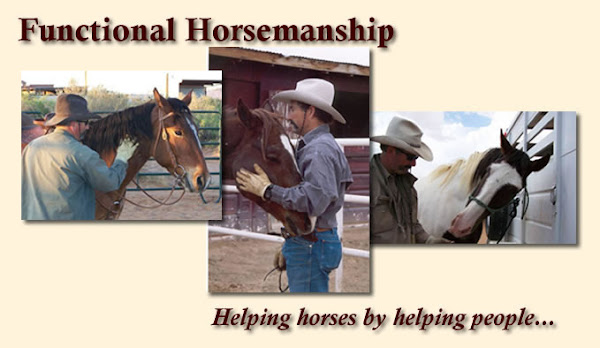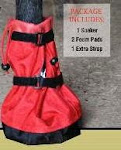About every person I know carries a knife. Town people usually carry a folding knife with a clip that slides down over a pocket opening, but people involved with horses sometime have one hand occupied where a fairly short fixed blade knife comes in handy. I had a very competent custom knife maker who made me several knifes with features I liked, but sadly he passed away and similar custom knives can run $150 to $300. Too much for most people especially in this age of skyrocketing feed and Vet bills. So since then I have been looking for a well made, but economical cowboy type knife as several people I ride with were interested in the knives I am seldom without.
About 9 months ago I found a maker of short fixed blade knives at a reasonable price. They aren't custom knives but instead made on CNC machinery from Damascus blanks. They are fairly hard knives meaning they hold an edge pretty good. I bought two, gave one of them to an old Cowboy buddy, and kept one to use and try out. I think it's a good knife design, good material and at a really good price, so I bought a few more and started to offer them. The Cow Bone handled, 3 inch fixed blade with cross draw shealth, pictured below, is available here.
These Damascus knives are made from AISI 5160 steel, also known as 5160 spring steel, and AISI 4340 steel (UNS G43400). AISI 5160 high carbon steel has excellent toughness, ductility and fatigue resistance and is commonly used in industrial applications as well as in the automotive sector for many different heavy duty spring applications, especially for leaf springs. 5160 carbon steel is also used to make knives and swords. AISI 4340 steel is an ultra-high strength medium carbon low alloy steel, which combines deep hardenability, high ductility, toughness and strength, and has high fatigue resistance.
Since I started offering a version of a Cowboying knife, I have sent out nine and have received three reviews or comments on this knife, below. The Stabilized Indian Rosewood handled, 3 inch fixed blade with cross draw shealth, pictured at above, is available here.
Will B. wrote: "Nice knife and easy to carry. Like the cutout so I can hold the blade up and cut rope or twine." Note: The "cut out" he is referring to is commonly called the 'choil' which is a groove or cut out between the handle and where the knife blade begins intended for the user to establish a more secure grip and to protect the hand from sliding up onto the blade. You can see the choil next to my index finger on the photos above.
R.G. wrote: "I almost bought a Moore Maker roughly the same size but 4 times as expensive until I bought the knife you sell, the one with brownish red handle. I really like it. I will buy another." Note: The handle he is referring to is the Stabilized Indian Rosewood handle.
Jimmy T. wrote: "The knife is very good, but I wish the sheath was just a bit narrower and made from harness leather (it will last longer). The angle is good and it is reversible so there is that. I have other knife sheath from a similar knife I lost and the knife fits okay into that. To answer your question on price, it's a good value for $60."
















